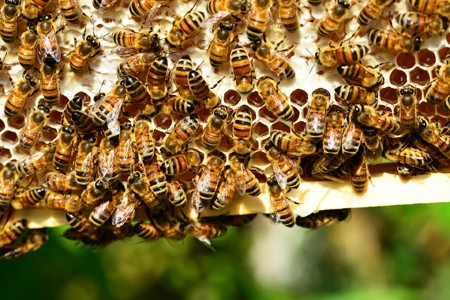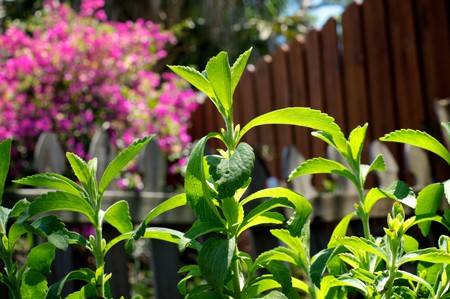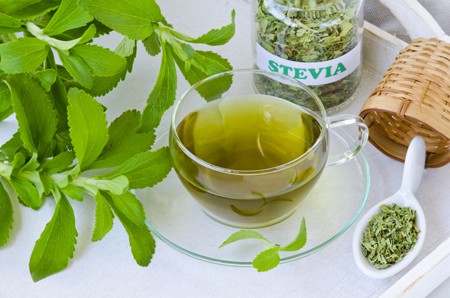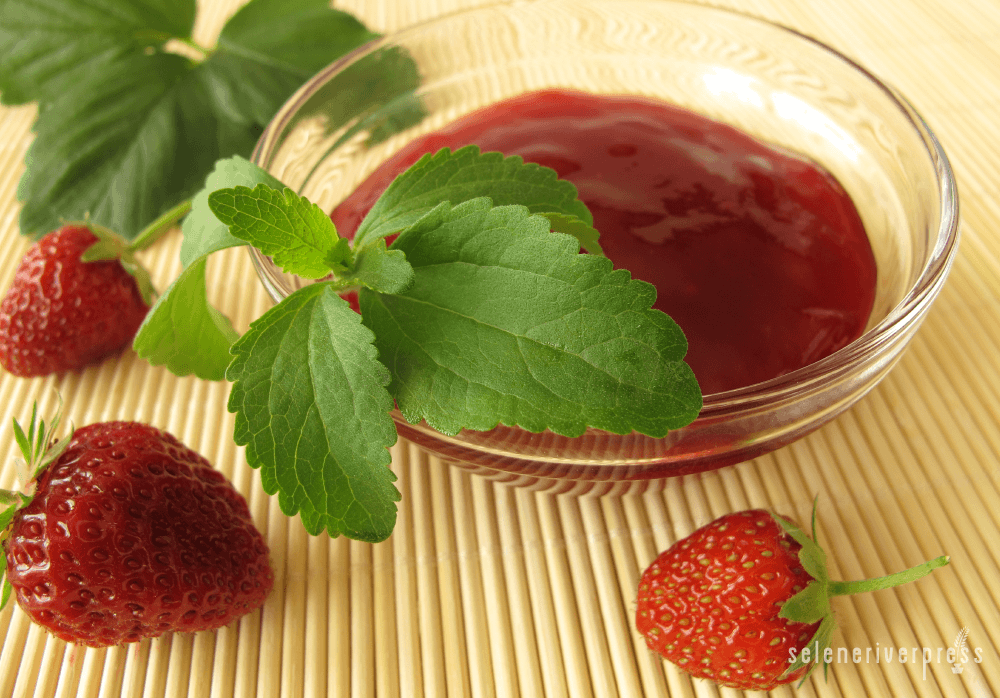In a recent post regarding the healthiest sweeteners, I carefully detailed what are considered to be the most natural and safe sweeteners. I also included some modified recipes to demonstrate how we can and should cut down on our sweetener consumption, even for the ones we consider healthy and natural. In that same post, I discussed how destructive and addictive too much of a good thing can be. Reading that post first may make this one much more helpful.
An interesting phenomenon sometimes happens when you research and write on a subject. The research oftentimes changes long-held opinions on the subject you were writing about. The result is that you often rethink your use of products, foods, and other lifestyle norms you may currently advocate and promote. For me, my blog post on sweeteners propelled me to look more closely at stevia. I already use it, but not to the extent that I now intend to in the future. Let me tell you why, as it may save you or someone you love from a future negative health event.
The more I read these two articles—“124 Ways that Sugar Can Ruin Your Health” by Nancy Appleton and “Replacing Refined Sugars with Natural Sugars One Step at a Time” by Lori Lipinski—regarding the phenomenal side effects of refined sugars, the more I cringe knowing how many families are addicted to this potent drug! Yes, sugar is a drug, in my humble opinion. Its effects are so devastating that, only by viewing it as a serious addiction—similar to an addiction to dope, prescription pills, or alcohol—can we explain why we continue to consume it ourselves and why we don’t bat an eye at the insanity of feeding it to our children!
Now, don’t despair. I’m in agreement with the recommendations of Sally Fallon and the Weston A. Price Foundation, as well the teachings of Dr. Royal Lee, on the use of natural sweeteners. However, I’m convinced that, as traditional cooks, we need to seriously consider reducing the amount of even natural sweeteners we use and give green powdered stevia a serious try.
 But before I talk more about that, here’s an interesting story about honey:
But before I talk more about that, here’s an interesting story about honey:
A very good and learned friend mentioned having a small honeybee operation on a small farm. Unlike much of the honey we now consume, which comes from honeybees who are fed sugar water during winter, these bees are fed their own honey. This is truly their natural and proper food!
I was even lucky enough to get a small jar. Sampling it was a total surprise. I can honestly say it was like no honey I’ve ever tasted. It would be futile to attempt to describe it in words, but I suggest that you find local honeybee producers who can certify that they leave the honey in the hive for the bees during winter, rather than sugar water, which can’t possibly be healthy for the bees and probably compromises the quality of the honey.
Unfortunately for me, because I have the difficult task of always watching my sugar intake, that wonderful honey still spiked my blood sugar, and I cannot use it on a daily basis as a sweetener. Since one of my many hobbies is medicinal herb gardening, I naturally began to seek out information regarding stevia. It is indeed sweet, but it won’t spike your blood sugar levels, become addictive, or do anything that may compromise your health.
Additionally, you can grow your own, or you can get green organic powdered stevia from a reputable supplier such as Mountain Rose Herbs or Pacific Botanicals—two of my favorite places to get great organic herbs.
Note: White stevia may have been bleached with hexane and/or other unsafe substances, or had its rich mineral content removed. It is not recommended by Sally Fallon of the Weston A. Price Foundation.
Stevia: Amazing Facts and Health Benefits
Here are the major and most interesting facts I discovered about the plant stevia. (After that I’ll talk about the best book on growing and using stevia and share some of the great recipes I found on the subject.) A bit of history: As many as 1,500 years ago, the Guarani discovered a native plant with delicious green leaves that had an unbelievable sweetening power. When they chewed just a few leaves or added crushed leaves to hot mate (a bitter tea-like drink), the leaves sweetened the drinks…much like our modern-day sugar.
- Stevia herb parts are very low in calories. Parts by parts, its dry leaves possess roughly forty times more sweetness than sugar. The sweetness quality in stevia is due to several glycoside compounds, including stevioside, steviolbioside, rebaudiosides A-E, and dulcoside.
- Stevioside is a noncarbohydrate glycoside compound. Hence, it lacks the properties that sucrose and other carbohydrates possess. Stevia extracts such as rebaudioside-A are 300 times sweeter than sugar. Besides being a near-zero calorie food ingredient, stevia extracts have several unique properties such as long shelf life and high temperature tolerance. They are also non-fermentative.
- Further, the stevia plant has many sterols and a vitamin rich content of triterpenes, flavonoids, and tannins. Some flavonoid polyphenolic antioxidant phyto-chemicals present in stevia are kaempferol, quercetin, chlorogenic acid, caffeic acid, isoquercitrin, and isosteviol. Studies show that kaempferol can reduce risk of pancreatic cancer by 23 percent (American Journal of Epidemiology).
- Chlorgenic acid reduces enzymatic conversion of glycogen to glucose in addition to decreasing absorption of glucose in the gut. Thus, it helps reduce blood sugar levels. Lab studies also confirm a reduction in blood glucose levels and an increase in the liver concentrations of glucose-6-phosphate, and of glycogen.
- Certain glycosides in stevia extract have been found to dilate blood vessels and increase sodium excretion and urine output. In effect, stevia, at slightly higher doses than as a sweetener, can help lower blood pressure.
- Being a noncarbohydrate sweetener, stevia would not favor the growth of Streptococcus mutans bacteria in the mouth, a causative agent of dental caries and tooth cavities. On the other hand, certain compounds in stevia were found to inhibit caries-causing bacteria in the mouth.
- In addition, being an herb, stevia contains many vital minerals and vitamins that are selectively absent in artificial sweeteners.
Growing and Using Stevia
 The book I refer to above is Growing and Using Stevia by Jeffrey Goettemoeller and Karen Lucke. This is a must read, and it can be purchased on Amazon. (Jeffrey is also the author of Stevia Sweet Recipes on Amazon.)
The book I refer to above is Growing and Using Stevia by Jeffrey Goettemoeller and Karen Lucke. This is a must read, and it can be purchased on Amazon. (Jeffrey is also the author of Stevia Sweet Recipes on Amazon.)
Listed below are the thirty-five delicious sugar-free recipes included in Growing and Using Stevia. You can prepare them all using green stevia powder from your garden or organic herb vendor.
Note: Not all the recipes are compliant with the Wise Traditions diet philosophy and some will necessarily need to be modified if you’re a member of the Weston A. Price Foundation.
Stevia recipes from Growing and Using Stevia (I’ve incorporated a few of my favorites below):
- Simple Stevia Tea
- Hot Tea, Green
- Blueberry Grape Syrup
- Puffy Oven Pancakes
- Spiced Oat, Nut, and Fruit Granola
- Gluten-Free Granola
- Breakfast Oatmeal
- Cinnamon Apple Oatmeal
- Breakfast Sausage
- Vanilla Nut “Ice Cream”
- Orange Stevia Soda
- Chocolate Milk Shake
- Peach Smoothie
- Strawberry Soup
- Strawberry Smoothie
- Chocolate Chip Cookies
- Lime Pie
- Rhubarb Strawberry Pie
- Blueberry Pie
- Carob Silk Pie
- Coconut Whipped Cream
- Lemon Chiffon Topping
- Baked Custard
- Pumpkin Custard
- Grape Kiwi Salad
- Pineapple-Berry Gelatin
- Sweet ’n Spicy Meatballs
- Savory Spaghetti Sauce
- Special Garlic Toast
- Herb Dumplings for Stew
- Salt-Free Herbal Seasoning
- Creamy Herb Salad Dressing
- Sunflower Oat Rolls
- Pumpkin Muffins
- Rice Tomato Soup
Stevia Recipes Using Green Powdered Stevia Leaf
 Note: These recipes have been adapted from Growing and Using Stevia to meet the Wise Traditions diet philosophy.
Note: These recipes have been adapted from Growing and Using Stevia to meet the Wise Traditions diet philosophy.
Puffy Oven Pancakes
Ingredients
2 tablespoons organic butter
3 organic extra large eggs (free range and soy-free preferred)
½ cup whole grain sprouted wheat flour
½ cup organic whole milk
¼ teaspoon sea salt
¼ teaspoon organic green stevia powder
¼ teaspoon vanilla extract
Instructions
- Place butter in a 10-inch oven proof skillet or cake pan. Place in 400°F oven for 3–5 minutes, or until the butter melts.
- In a bowl, beat eggs until combined. Add flour, milk, sea salt, green stevia powder, and vanilla. Beat until smooth. Immediately pour into the hot skillet or pan. Bake about 25 minutes or until puffed and well-browned. Serve with your favorite topping.
Vanilla Nut Ice Cream
Ingredients
3½ bananas, peeled
½ cup organic apple juice
¼ teaspoon green stevia powder
1½ teaspoons vanilla extract
⅓ cup whole milk yogurt
2 tablespoons organic peanut butter
Instructions
- At least a day before making this recipe, break the bananas into chunks, drop in a plastic bag, seal and freeze.
- Place the remaining ingredients in a blender container. Add a few of the frozen banana chunks and blend on low speed, gradually increasing to a higher setting.
- Add remaining bananas a few pieces at a time. If mixture becomes too thick to process, add a bit more apple juice. Serve immediately.
Coconut Whipped Cream
Delicious on shortcake, pie, or other desserts.
Ingredients
½ cup coconut milk (Thai Kitchen Organic Coconut Milk recommended)
1 cup organic whipping cream
1 teaspoon organic green powdered stevia
¼ teaspoon almond extract
Instructions
- Chill a small mixing bowl and the beaters for your electric mixer. Open the coconut milk and measure out ½ cup of the thick part of the milk from the can. (Reserve the remaining for another use.)
- Add remaining ingredients. Whip until medium peaks remain when beaters are lifted (overbeating will result in lumps).
- Serve immediately or reserve in refrigerator a short time.
AUTHOR’S NOTE
To choose your organically grown and fresh ingredients wisely, use the following criteria:
- chemical- and hormone-free meat
- wild-caught fish
- pasture-raised, organic eggs
- whole, unrefined grains
- virgin, unrefined, first-press organic oils
- whole-food, unrefined sweeteners
- pure, clean, spring water
- sea salt
- raw and/or cultured milk and cream products
Photos from iStock/Heike Rau (at top); sorsillo (stevia in garden); Pat_Hastings (stevia infusion)
Note from Maria: I am a Certified Natural Health Professional, CNHP, not a medical doctor. I do not diagnose, prescribe for, treat, or claim to prevent, mitigate, or cure any human diseases. Please see your medical doctor prior to following any recommendations I make in my blogs or on my website.




I tried to purchase the book at the link, and found no place to purchase it. Can you give me a direct link?
The author called the vendor about fixing their link. Meanwhile, you can get it here on Amazon: https://www.amazon.com/Growing-Using-Stevia-Garden-Recipes/dp/0978629337/ref=sr_1_1?ie=UTF8&qid=1468074692&sr=8-1&keywords=growing+and+using+stevia